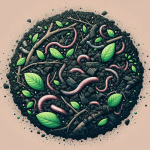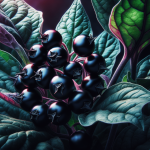This post may contain affiliate links. As an Amazon Associate, we may earn commissions from qualifying purchases.
Have you ever wondered about the plants you come across while exploring the scenic landscapes of the United Kingdom? The temperate climate and diverse habitats of the UK are home to a multitude of plant species, some of which can be incredibly dangerous despite their beauty. One such plant that you should be particularly vigilant about is Oleander.

Understanding Oleander
Oleander (Nerium oleander) is a highly toxic plant that is often admired for its vibrant flowers. Originally native to the Mediterranean region, this plant can now be found in various parts of the world, including the UK.
What is Oleander?
Oleander is an evergreen shrub that can grow up to 6 meters tall. It is known for its striking flowers, which come in shades of white, pink, red, and even yellow. The plant’s long, lance-shaped leaves and delicate clusters of blooms make it a popular choice in gardens and public landscapes.
Why is Oleander Dangerous?
The danger of Oleander lies in its chemical composition. All parts of the plant contain toxic compounds, including oleandrin, oleandroside, and neriine. Ingesting even a small amount of any part of the plant—whether it’s leaves, flowers, or seeds—can be fatal to humans and animals. The toxicity can result in symptoms such as nausea, vomiting, abdominal pain, and even heart complications.
Oleander in the United Kingdom
Although not native to the UK, Oleander has made its way into British gardens and greenhouses. Its popularity as an ornamental plant makes it a common sight, particularly in warmer southern regions. However, the plant’s toxic nature means that proper identification and handling are crucial.
How Did Oleander Reach the UK?
Oleander was introduced to the UK through horticultural trade. Its aesthetic appeal made it a popular import, and it has since been cultivated in numerous domestic gardens and public spaces. Its ability to thrive in temperate climates makes it a suitable addition to the UK’s botanical variety, despite its origins in the Mediterranean.
Regions Where Oleander is Common
In the UK, Oleander is primarily found in the southern regions where the climate is milder. Coastal areas and sheltered gardens are particularly favorable environments for this plant. While less common in the colder northern regions, it can still be found in greenhouses and conservatories.
Recognizing Oleander
Knowing how to identify Oleander is essential for anyone who spends time outdoors in the UK. Being able to recognize the plant can help you avoid accidental contact or ingestion.
Physical Characteristics
Oleander is characterized by its long, narrow leaves which are typically dark green and leathery. The flowers are the most distinctive feature, growing in clusters and exhibiting a variety of colors. The plant can appear as a shrub or a small tree and often has a bushy, dense appearance.
Seasonal Changes
Oleander blooms from late spring to early autumn. During this time, you’ll notice the vibrant flowers adding a splash of color to the landscape. The flowers are followed by capsule-like fruits, which split open to release seeds. Even in the off-season, the evergreen leaves make the plant easy to spot.
Table: Key Identifiers of Oleander
| Characteristic | Description |
|---|---|
| Leaf Shape | Long, narrow, lance-shaped |
| Leaf Color | Dark green |
| Flower Colors | White, pink, red, yellow |
| Plant Height | Up to 6 meters |
| Blooming Season | Late spring to early autumn |
| Fruit Type | Capsule-like, splits to release seeds |
Safety Precautions
Given the highly toxic nature of Oleander, it’s important to take certain precautions if you encounter or cultivate this plant.
Handling the Plant
When handling Oleander, wear gloves and wash your hands thoroughly afterward. Avoid touching your face, especially your mouth and eyes, while handling the plant. It’s also wise to limit the plant’s accessibility to children and pets who might inadvertently ingest any part of it.
First Aid Measures
If you suspect poisoning from Oleander, seek immediate medical assistance. Symptoms can appear rapidly and may include dizziness, irregular heartbeat, and severe gastrointestinal distress. Activated charcoal may be administered in a medical setting to help absorb the toxins, but professional medical intervention is critical.
Oleander and the Environment
While Oleander is undoubtedly beautiful, its presence in the UK raises some concerns beyond its toxicity to humans and pets.
Impact on Local Ecosystems
Oleander is not native to the UK and can potentially disrupt local ecosystems. It competes with native plant species, which can affect the local flora and fauna balance. Its toxicity also means that it can pose a risk to native wildlife that may inadvertently consume it.
Responsible Cultivation
If you choose to cultivate Oleander, do so responsibly. Ensure that it is contained within your garden and that clippings and plant waste are disposed of properly. Consider selecting native plants as alternatives, which can provide similar aesthetic benefits without the associated risks.
Alternatives to Oleander
If you’re looking for beautiful, flowering plants for your garden without the dangerous side effects, there are many alternatives to consider. These options are not only safe but also contribute positively to local biodiversity.
Native Flowering Shrubs
Incorporating native plants into your garden is a great way to support local ecosystems. Here are some native flowering shrubs to consider:
Hawthorn (Crataegus monogyna)
Hawthorn is a beautiful, native flowering shrub that produces white to pink flowers in the spring. It’s also beneficial to local wildlife, providing food and shelter.
Elderberry (Sambucus nigra)
Elderberry is another excellent choice, known for its creamy white flowers in the summer and dark berries in the autumn. The berries are also used to make jams and wines.
Table: Safe Alternatives to Oleander
| Plant Name | Characteristics |
|---|---|
| Hawthorn | White to pink flowers, beneficial to wildlife |
| Elderberry | Creamy white flowers, dark berries |
| Viburnum | Clustered white or pink flowers, ornamental berries |
| Dogwood | Bright red stems, white flowers |
| Buddleia | Purple, pink, or white flowers, attracts butterflies |
Conclusion
Oleander is undoubtedly a stunning plant, but its toxic properties make it a risky addition to any garden in the United Kingdom. Being aware of its characteristics and the dangers it poses can help you make informed decisions about the plants you choose to cultivate. By opting for safe, native alternatives, you can enjoy a beautiful garden while also contributing to the health and balance of your local ecosystem.
Remember to always handle plants with care and educate yourself on the various species you might encounter. The more knowledge you have, the safer and more enjoyable your outdoor experiences will be. Keep an eye out for Oleander, and make sure your garden remains a safe haven for you, your family, and the local wildlife.








